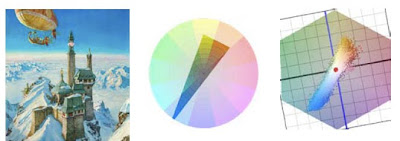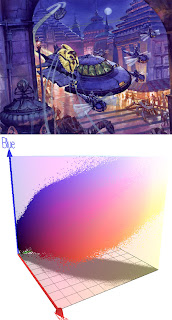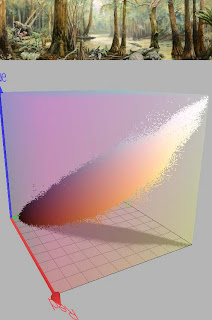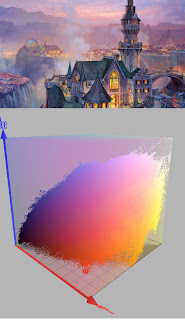The nineteenth-century painter Giovanni Boldini (1842-1931) is best known for his dazzling society portraits.
But before he found that groove, he painted landscapes, cityscapes, night scenes and genre pieces, blending his academic and impressionist instincts into an formidable bunch of paintings and drawings now on exhibit at the Clark Art Institute in Williamstown, Massachusetts.

The early influence of Meissonier shows up in “The Dispatch Rider”, where an equestrian soldier digs a letter out of his bag, clenching another letter between his teeth. The recipient stands on the wet sidewalk he has just been cleaning. If you look closely at the original, you can see the building across the street reflected in the shiny helmet, which is no bigger than a quarter.

“Place Clichy” shows a street scene bustling with figures, some the size of sunflower seeds. It’s a joyous exploration of the human anthill, painted with tiny brushes. He cuts loose in the sky above, painting some of the clouds with six-inch strokes.
The contrast between delicate, tiny details and large dynamic gestures is typical of Boldini. His Jekyll-and-Hyde painterly instincts range from watchmaker miniaturist to unrestrained big-stroke action painter.
In “Nocturne in Montmartre” (Horses at Night), c. 1883, he uses deft strokes the size of housepainter’s brushes to convey the confused frenzy of horses and carriages at an intersection, partially glimpsed in the gaslight. In an age of impressionism, no other artist dared to capture such a fleeting and powerful visual experience.
“The Pont des Saints-Pères”, c. 1881–86 seems influenced by the burgeoning revolution of photography. He stages a scene of terrible action: A mother grabs her son out of the way of an oncoming team of horses. All that survives from this experiment was a semi-abstract concept sketch and two large fragments cut out of the original bedsheet-size canvas.
Throughout the exhibition are scattered a few samples of contempory artists who influenced him: Sargent, Meissonier ,Pissarro, Manet, Renoir, and Degas.
Adolphe von Menzel is conspicuously lacking, as is the incredible portrait that Boldini did of him.

Boldini gives the impression of an artist flexing his muscles, trying everything, reaching in a lot of directions, restlessly experimenting. The show chronicles the track of a artistic comet strewn across seventy canvases. He finally connected with portraiture in a small portrait of an artist friend. High society took notice. The orders streamed in, and the rest is the Boldini most of us know.
What his portraits and landscapes may sometimes lack in psychological penetration or lyrical power, they more than make up for in unadulterated
brio.
The museum has free admission during the winter months. Don’t miss a visit to the library, open to visitors. It’s one of the finest collections of art books in the northeast. The Boldini show will be on view through April 25, 2010. The hardcover catalog is comprehensive and nicely printed. It contains 232 pages with 134 color illustrations ($45 at the show,
$43 on Amazon).
----------------
P.S. Shout-out to blog reader Martha who came up and said hi at the show!
Official museum website about the exhibition Berkshire review Sample of Audio Tour




















































